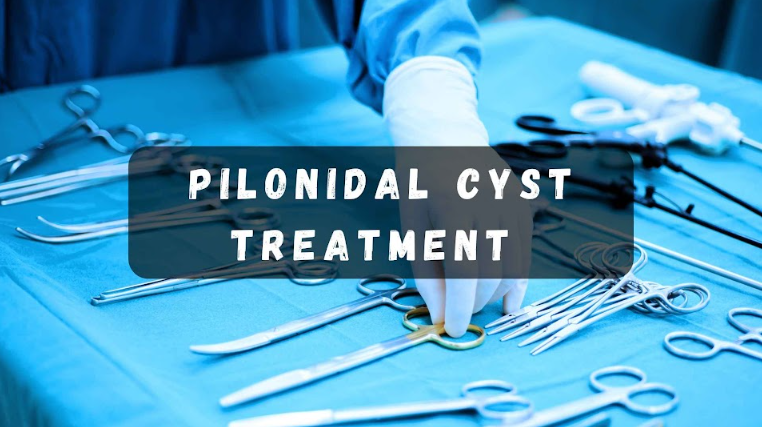“Pilonidal cyst must be treated at the earliest. It is easier to treat the cyst at this stage. But if the pilonidal cyst turns painful and infective, matters get complex and complicated.”
Dr. Allen Kamrava MD, MBA, is a noted colorectal surgeon. Check out why he feels early treatment is important and explore the treatment options available for a quick and complete recovery.
Pilonidal cyst treatment can be long and painful. If the patient fails to seek early medical support, chances are that the cyst will get infected. Subsequent treatment methods will depend on the complexity of the case. Here are the available treatment options to get rid of a pilonidal cyst.
Nature Of Pilonidal Cysts
Pilonidal cysts affect more men than women. This is because men experience heavy hair growth on the body. The hair follicle between the clefts of the buttocks is the prime spot. Its location at the end of the tailbone makes walking, sitting and lying down difficult. As the cyst begins to accumulate hair roots, skin cells and pus, the area becomes red, swollen and pus discharge is common. The high rate of recurrence of pilonidal cysts is a cause of concern. The chronic cysts are the most difficult to manage and bear with.
Treatment Options For Pilonidal Cyst
Treatment methods include an entire range of options. These are from conservative methods to aggressive surgical procedures.
Tips To Prevent Pilonidal Cysts
These are the basic steps to manage a pilonidal cyst. Some of the pilonidal cyst treatments start even before the onset of the condition. These are hygiene habits and hair removal. Keeping the area neat and tidy is the best way to reduce the chances of developing a pilonidal cyst. Also, avoid wearing tight clothes. A sedentary lifestyle, especially sitting for long hours is very bad. It puts too much pressure on the area and aggravates the condition.
Quick Remedies At Home
There are two basic steps to manage a pilonidal cyst in its initial stages. Treatment for pilonidal cyst starts with warm compress, Sitz Bath, and use of topical antibiotics to combat the spread of infection. As the painkillers and antibiotics are available over the counter many patients avoid visiting the doctor for expert advice.
Medical Treatments Available
When the patients fail to find relief from remedies, they turn to experts for treatment of the pilonidal cyst. The colorectal surgeon is the best person to take up the case. The treatment options include:
- Incision and Drainage: This involves cutting open the cyst. After the cut, the debris is removed. This alleviates the pain immediately. The wound is typically left open. It is covered and packed with a cotton gauze. The healing is slow and certain precautions are important to prevent complications.
- Use of oral and topical antibiotics: at this stage is very important. It will control the spread of infection and promote healing of the wound. Proper wound care is the only way to reduce the risk of recurrence. The treating doctor will give a follow-up schedule to ensure proper and fast healing of the wound.
- Surgical Excision: If the pilonidal cyst is chronic or the size of the cyst is very big, the treatment will get more aggressive. A surgery to remove the infected pilonidal cyst and the surrounding area is recommended. How complex and extensive the surgery is will depend upon how complex the case is. The width and depth of the cyst is important.
The Methods of Surgical Removal Include:
- Wide Local Excision – In this all of the skin tissue surrounding the cyst area is removed. The wound is preferably left open. This method of healing inside out reduces the chances of relapse. But, the recovery time is long and complete recovery can take up to four weeks. Also, it is very difficult to take care of open wounds.
- Excision With Marsupialization – Some wounds cannot be left open. They can be really big and deep in size. So the risk of bleeding is high. In such cases, the doctor will close the edges of the wound together with stitches. This closed wound is less likely to get infected from external sources. Also, the gauze packing provides comfort and protection while sitting and lying down. But as the wound cavity is hollow, the likelihood that the infection will resurface again is high. Therefore post -procedure care is very important in this case. It can take up to six weeks to heal completely.
- Rhomboid Flap Technique – This is the most aggressive and invasive of all treatments for pilonidal cyst. Unlike in excision with marsupialization where the wound cavity is left hollow, here the cavity is packed with healthy skin taken from another part of the body. The area is stitched with stitches. The recovery time is the longest. And it is the most complicated of all surgical processes. But the advantage is that there is a very low chance of a relapse. Thus, it is often seen as the permanent solution for chronic cysts.
Final Thoughts
While minor pilonidal cysts are often managed at home, it is always good to seek expert medical advice in all cases. The doctor will assess the situation and roll out a treatment plan on the basis of complexity. Dr Allen Kamrava MD, MBA, has helped many patients recover well from the painful condition. Seek an appointment today to understand what’s the best way to permanently treat your pilonidal cyst.
Read Next: celebriches

Jennifer David is the creative force behind CelebRiches, your go-to source for celebrity financial exploits. With an unwavering passion for the entertainment industry, she delivers in-depth insights into celebrities’ net worth, combining thorough research with a captivating narrative. Explore the stars’ fiscal journeys through Jennifer’s expert lens, where finance meets fame most engagingly.

